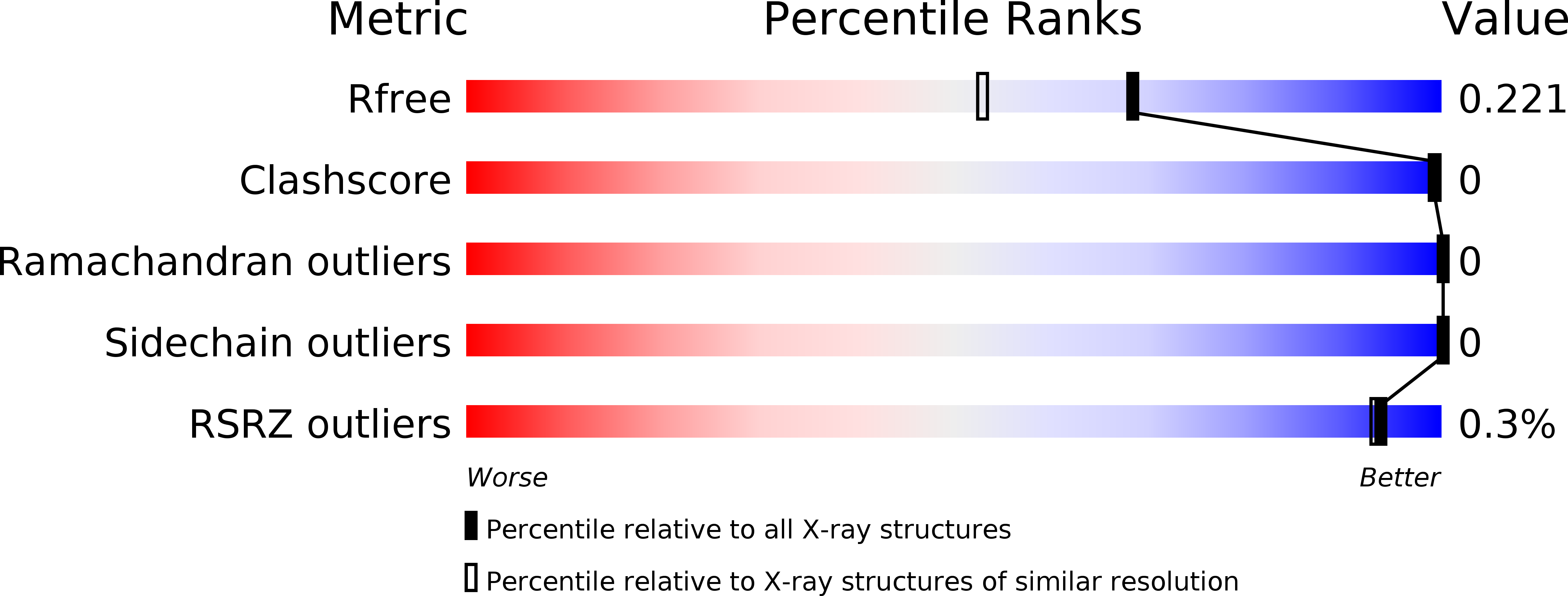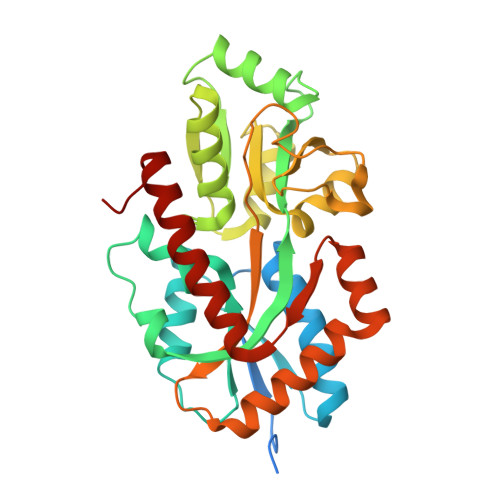Structural basis for high-affinity adipate binding to AdpC (RPA4515), an orphan periplasmic-binding protein from the tripartite tricarboxylate transporter (TTT) family in Rhodopseudomonas palustris.
Rosa, L.T., Dix, S.R., Rafferty, J.B., Kelly, D.J.(2017) FEBS J 284: 4262-4277
- PubMed: 29082669
- DOI: https://doi.org/10.1111/febs.14304
- Primary Citation of Related Structures:
5OEI, 5OKU - PubMed Abstract:
The tripartite tricarboxylate transporter (TTT) family is a poorly characterised group of prokaryotic secondary solute transport systems, which employ a periplasmic substrate-binding protein (SBP) for initial ligand recognition. The substrates of only a small number of TTT systems are known and very few SBP structures have been solved, so the mechanisms of SBP-ligand interactions in this family are not well understood. The SBP RPA4515 (AdpC) from Rhodopseudomonas palustris was found by differential scanning fluorescence and isothermal titration calorimetry to bind aliphatic dicarboxylates of a chain length of six to nine carbons, with K D values in the μm range. The highest affinity was found for the C6-dicarboxylate adipate (1,6-hexanedioate). Crystal structures of AdpC, either adipate or 2-oxoadipate bound, revealed a lack of positively charged amino acids in the binding pocket and showed that water molecules are involved in bridging hydrogen bonds to the substrate, a conserved feature in the TTT SBP family that is distinct from other types of SBP. In AdpC, both of the ligand carboxylate groups and a linear chain conformation are needed for coordination in the binding pocket. RT-PCR showed that adpC expression is upregulated by low environmental adipate concentrations, suggesting adipate is a physiologically relevant substrate but as adpC is not genetically linked to any TTT membrane transport genes, the role of AdpC may be in signalling rather than transport. Our data expand the known ligands for TTT systems and identify a novel high-affinity binding protein for adipate, an important industrial chemical intermediate and food additive. Protein structure co-ordinates are available in the PDB under the accession numbers 5OEI and 5OKU.
Organizational Affiliation:
Department of Molecular Biology and Biotechnology, The University of Sheffield, Sheffield, UK.

















